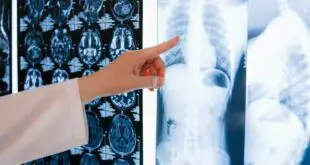The human body has a network of numerous systems and structures that work together to keep us alive and functioning.
One such structure is the muscles, which play a vital role in our ability to move and perform various activities.
While we may be familiar with the major muscles in our body, such as the biceps or quadriceps, one muscle (probably unknown to many) stands out for its length.
But which one is it? Continue reading to the end to find out the longest muscle in your body, its location, its functions, and much more.
What Is The Longest Muscle In The Human Body?
The longest muscle in the human body is known as the sartorius muscle. This superficial muscle spans the entire length of the thigh. It has a strap-like shape and can reach up to 600 mm in length.
The sartorius muscle comprises five to seven neurovascular compartments, each containing a neuromuscular endplate zone. While some of its fibers end within the muscle, others run the entire muscle length.
What Are The Functions Of Sartorius?
The sartorius muscle is a unique muscle that spans both the hip and knee joints, enabling it to produce movements in both joints. Here are the functions of the Sartorius muscles.
- Hip flexion – The Sartorius muscle aids in flexing the hip joint, allowing us to lift the thigh towards the abdomen.
This is particularly important during activities like walking, running, or climbing stairs, where hip flexion is a fundamental movement.
- Weak abduction – While muscles like the gluteus medius perform the primary function of hip abduction, the Sartorius also weakly abduct the thigh.
- Knee flexion – The Sartorius muscle can flex the leg at the knee joint. This function aids in kicking, cycling, or bending the knee during various movements.
- Pelvic Stabilization – The Sartorius muscle stabilizes the pelvis, particularly in women. Its action, along with other muscles on both sides of the body, helps to constrict the pubic symphysis.
- Medial leg rotation – When you flex the knee, the Sartorius also contributes to the medial rotation of the leg, thus helping maintain balance and coordination during activities involving knee flexion.
- Lateral thigh rotation – The Sartorius muscle also facilitates the outward rotation of the thigh at the hip joint.
This rotational movement allows for versatility in leg positioning and allows us to adapt to different physical activities.
Other Long Muscles In The Human Body
While the sartorius muscle is one of the longest muscles in the body, several others are also quite long and deserving of attention. They include:
1. Rectus Femoris – It is a long muscle that runs from the hip bone (ilium) down to the patella (kneecap) and plays a crucial role in extending the knee joint. It is one of the quadriceps muscles located in the anterior thigh.
2. Gastrocnemius – The gastrocnemius, often called the calf muscle, is a prominent muscle in the posterior compartment of the lower leg.
It spans from the femur’s posterior surfaces to the calcaneus (heel bone) via the Achilles tendon. It is responsible for plantar flexion of the ankle and allows us to point our toes downward.
3. Tibialis Anterior – The tibialis anterior is a long muscle in the lower leg’s anterior compartment.
It extends from the upper part of the tibia (shinbone) down to the first metatarsal bone in the foot. This muscle is responsible for the dorsiflexion of the ankle, allowing the foot to be lifted.
4. Biceps Brachii – While not in the lower extremities, the biceps Brachii is a long muscle in the upper arm. It runs from the scapula (shoulder blade) to the radius bone in the forearm.
The biceps brachii is responsible for elbow flexion and forearm supination (rotation of the forearm to face the palm upward).
5. Soleus – The soleus is beneath the gastrocnemius in the posterior lower leg. It runs from the tibia and fibula bones to the calcaneus, like the gastrocnemius. However, it is primarily responsible for plantar flexion of the ankle.
6. Gracilis – It extends from the pubic bone to the tibia and helps in hip adduction (moving the thigh toward the midline of the body) and knee flexion.
3 Main Types Of Muscles In The Body
Muscles are responsible for movement and provide structural support for our bodies. There are three main types of muscles in the body:
1. Skeletal muscle – It is attached to bones and allows for voluntary movement. Skeletal muscles are responsible for the movements we consciously control, such as walking, running, and lifting weights.
They are striated muscles, meaning they have a striped appearance due to the arrangement of their fibers.
Skeletal muscles work in pairs, contracting one muscle while the other relaxes to create movement. These muscles can be strengthened and toned through exercise and physical activity.
2. Cardiac muscle – The cardiac muscle is found only in the heart. Unlike skeletal muscles, cardiac muscles are involuntary, meaning we do not have conscious control over their contractions.
The unique structure of cardiac muscles allows them to contract rhythmically and continuously to pump blood throughout the body.
3. Smooth muscle – Smooth muscles are found in the walls of hollow organs such as the intestines, blood vessels, and uterus.
They are also involuntary and play a role in various bodily functions such as digestion, blood flow regulation, and childbirth.
Unlike skeletal and cardiac muscles, smooth muscles lack striations and have a smooth appearance. They contract slowly and involuntarily, allowing for slow movements and sustained contractions.
Sartorius Muscle pain
If you’re dealing with sartorius muscle pain, you might experience discomfort in your knee or the front of your hip. Luckily, some exercises can strengthen this muscle and ease the pain.
Symptoms
Most folks with sartorius muscle pain describe a burning feeling in the front of their hip or tenderness inside their knee.
This pain usually occurs when the muscle or tendon fibers get stretched or torn too far. The pain tends to intensify when you try to use the strained muscle.
If the strain is closer to your knee, you might feel tenderness and pain inside your knee and sometimes in the middle of your shinbone, about two inches below your joint. This discomfort can worsen during exercise or when you’re climbing stairs.
Associated Conditions
Hip strains leading to sartorius muscle pain can result from sudden injuries like falls, blows, or excessive stretching, known as acute injuries.
However, overuse injuries can also develop over time due to repetitive movements. Most commonly, these strains occur where the muscles and tendons meet.
Repeated strains could lead to sports hernias or athletic pubalgia, which involve strains or tears in the tendons, muscles, or ligaments in your lower abdomen or groin area.
Treatment Sartorius Muscle Pain
If you are dealing with sartorius muscle pain, rest and using over-the-counter pain meds can bring relief.
In cases where tendons have fully detached from the bone, surgery may be necessary to reattach them.
Some people may also find comfort in applying ice to the knee or hip for around 20 minutes a few times daily. This can help alleviate the pain.
Exercise To Strengthen Your Sartorius
The following exercises can help you strengthen the longest muscles in your body.
1. Tree pose
- Stand on one leg, keeping your foot firmly on the ground.
- Bend your other knee and place the sole of that foot on the inner thigh of your standing leg.
- Balance and bring your hands together in front of your chest.
- Hold for as long as you can maintain balance, then switch to the other leg.
2. Lateral band walks
- Place a resistance band around your ankles.
- Stand with your feet hip-width apart.
- Take small sideways steps while maintaining tension in the band.
- Walk to one side for a set distance or time, then return in the opposite direction.
3. Squats
- Stand with your feet shoulder-width apart.
- Lower your body by bending your knees and pushing your hips back.
- Keep your back straight and chest up.
- Return to the starting position by straightening your legs.
- Perform squats in sets and repetitions, gradually increasing difficulty.
4. Flexor stretch
- Kneel on the floor with your knees hip-width apart.
- Extend one leg straight behind you.
- Lean forward slightly while keeping your back straight.
- You should feel a stretch along the front of your hip and thigh.
- Hold the stretch for 20-30 seconds on each side.
Conclusion
What is the longest muscle in the human body? You’ve learned that the longest muscle in the human body is the sartorius muscle.
This muscle extends from the hip to the knee and plays a crucial role in various movements such as flexion, abduction, and thigh rotation.
Its elongated structure allows for a wide range of motion and flexibility. The sartorius muscle is often called the “tailor’s muscle” due to its importance in sitting cross-legged. We’ve also examined some exercises to help you deal with Sartorius muscle pain.
 Being Human
Being Human




